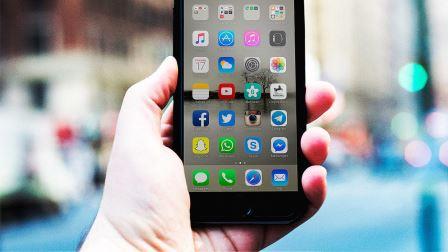Six Expert Tricks For Achieving Inbox Zero Every Day
What could you do with 30 extra hours in a week?
That’s about the time the average office worker spends using email, according to a recent survey by Adobe. The survey also revealed that Americans are checking their email round the clock regardless of what else is happening. Adobe found that 70% reported checking email while watching TV or even from the bathroom (42%). Another global study by technology market research firm the Radicati Group points to the potential reason. It found that the average worker sent and received around 122 business-related messages every day.
Getting back to inbox zero, or reasonably close, doesn’t have to be a pipe dream. Fast Company tapped the experts to get their best tips on managing a growing mountain of messages.
Proactive Adjustments
1. Change Your Mind-set
Rajeev Goel, CEO of marketing automation software company Pubmatic, has made achieving inbox zero a daily practice, in part, by changing the way he perceives—and prioritizes—responding to it.
“Think of email as facilitating work, not as work in and of itself,” he tells Fast Company. “Putting email in this context makes you think of it as lower priority, and may mean you’ll be less likely to click on your inbox every time a new mail alert comes through,” he explains.
Read More: Secrets From The CEO Who Achieves Inbox Zero Every Day
2. Unsubscribe
David Henzel, cofounder of MaxCDN, a content delivery network, reminds emailers, “You aren’t the only one who receives the same emails from the same lists every week. Or who, despite never reading (or even opening) most of them, never unsubscribes.”
Hitting the delete button, even without reading, takes precious time away from answering the ones that matter. Henzel urges people to unsubscribe. “You can do it manually,” he explains, “but if you’re as busy as I tend to be, I’d suggest checking out Unroll.me to help automate the process. It can unsubscribe you from all of your useless email newsletters in one click.”
Read More: 6 Steps To Tame Your Email Overload
3. Switch Tools
Henzel also recommends using Slack or Hipchat or other internal communications platform. In this way, he says, “You can eliminate status updates, lunch invitations, quick requests, check-ins, and hundreds of other small, routine emails that would otherwise gobble up space in your inbox.”
Active Changes
4. Focus
Switching from task to task isn’t practical. Research shows that even if we think we are great at multitasking, we are mistaken. And an often-quoted study of Microsoft workers revealed that when they multitasked, it took between 10-15 minutes to refocus on the work they were supposed to be completing.
To stick to the task at hand, try playing some ambient music. Background music in video games has been proven to get players quickly into a “flow” state where they can completely focus on achieving the next goal.
Read More: These Simple Tricks Will Help You Regain Your Dwindling Focus
5. Schedule Time To Check Email
Avoid the time suck by focusing on email in one (or more) dedicated segments of the day, according to Claire Diaz-Ortiz, author of Design Your Day. Put “email” on your calendar or to-do list, with designated times, such as noon, 3 p.m., and 6 p.m. She suggests picking those times when you are typically feeling low energy (hello mid-afternoon slump!). “Times of peak energy should be used for the most difficult things on your plate, and those that require intense focus. The vast majority of the time, that is not email,” she wrote in her book.
Read More: Two Simple Rules To Get Control Of Your Email
6. Don’t Respond Immediately
Chris Bailey, author of The Productivity Project, reminds stressed-out emailers that he’s tried to make a habit of sitting on emails. “When you hold off on responding, you have more time to connect the dots, you can form your thoughts, and ultimately, you can communicate better,” he says. The additional benefit? “You save yourself from having to send additional emails every time you gather a bit of new information—which makes your reader’s job a lot easier,” he says. And it makes your inbox a lot less full.
Fast Company , Read Full Story
(23)


